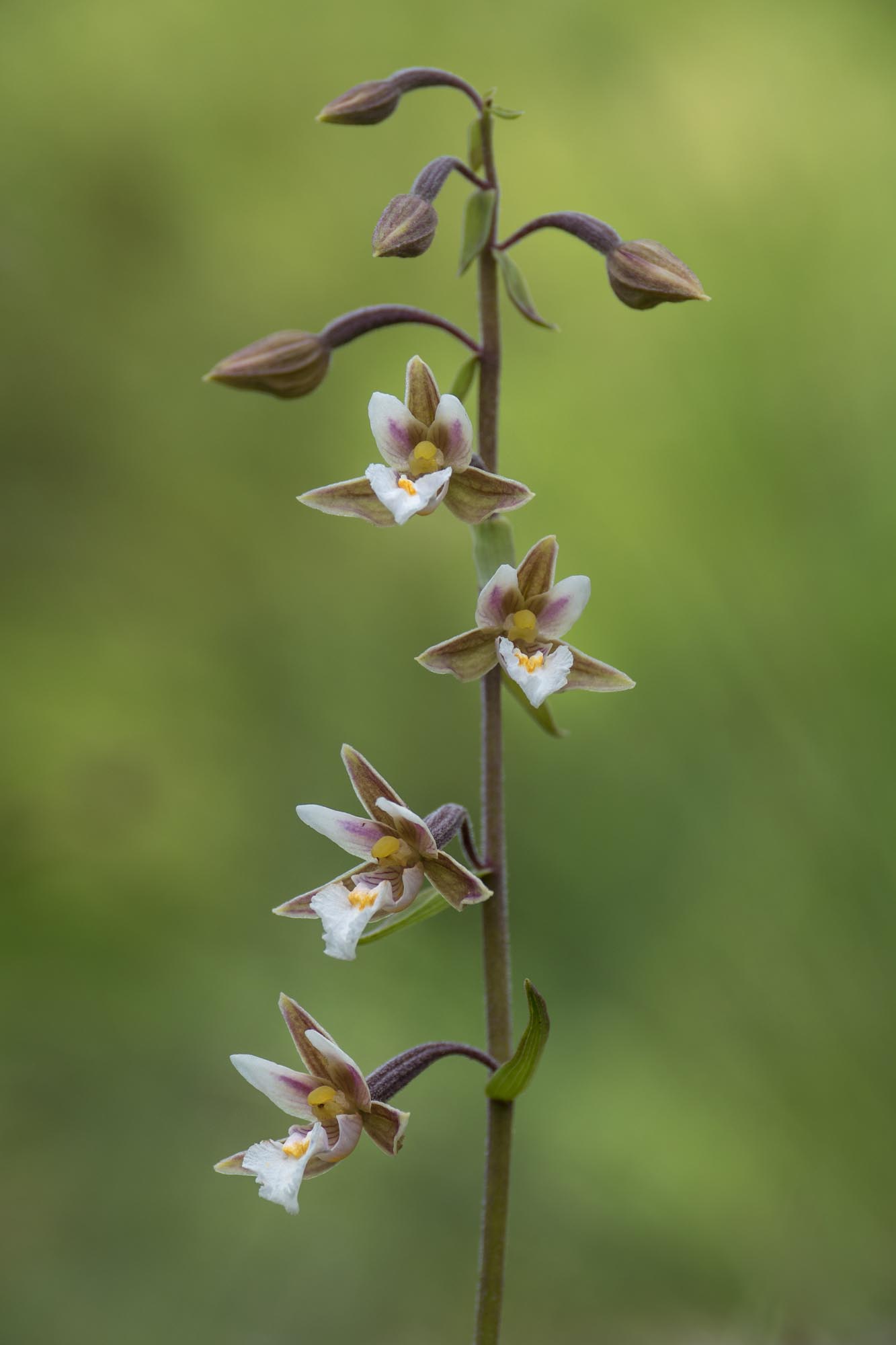
The 20 - 50 cm high Marsh hellebore (Epipactis palustris) particularly likes lime-rich, low-nitrogen soils. It is at home in fens and meadow bogs, meadows, alluvial forests and dune valleys. Its leaves have a lanceolate shape. The flowers of this orchid hang down loosely in a cluster. The outer petals are protruding and greenish to brownish in colour, while the inner petals are white. The wavy edge makes the reddish veined lip an ideal landing place for bees, wasps and flies. With their short proboscises, they can easily reach the nectar, which is deposited on the back of the labellum.
In the Tiroler Lech Nature Park, the marsh helleborine can be found at Lake Rieden, among other places. Lake Rieden is a small forest lake surrounded by several boggy areas. This area therefore represents an exceptional habitat in which not only the marsh helleborine can be found. This area is also home to endangered species, such as the Bileks azure damselfly. This strictly protected dragonfly is one of the rarest small dragonflies in Central Europe.
The marsh helleborine is also a fully protected plant species according to the Tyrolean Nature Conservation Ordinance 2006.